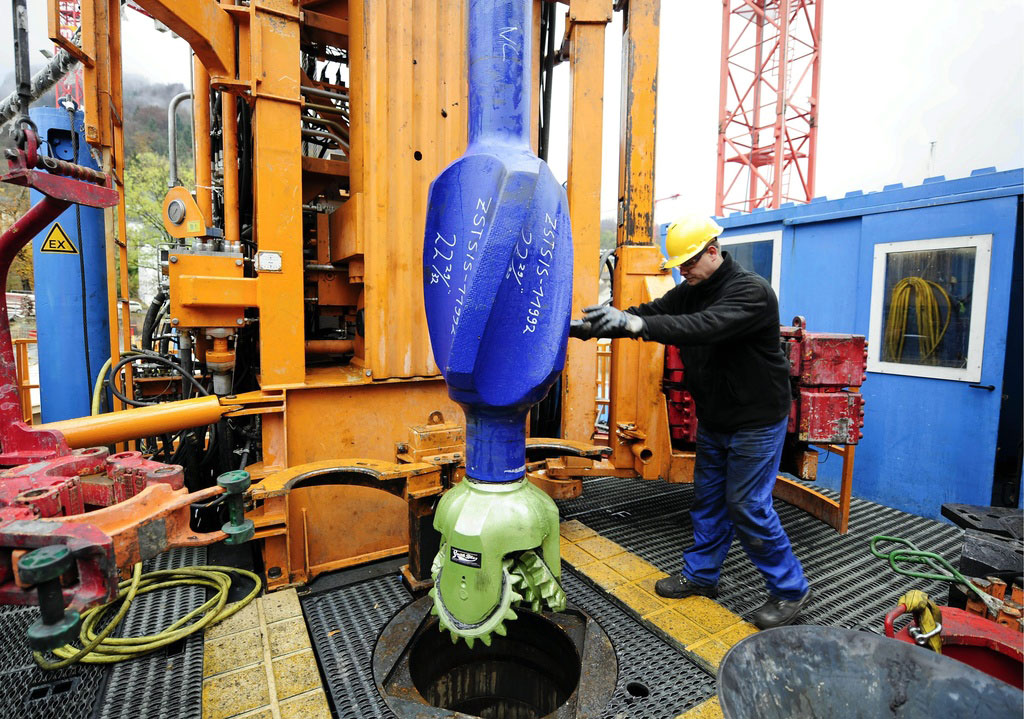Geothermal sector faces heat of public scrutiny

Switzerland’s fledgling geothermal power industry needs to win back sceptics following the highly publicised failure of a project in Basel, experts have warned.
But supporters insisted there is no chance of the promising alternative energy source dying a death in Switzerland despite the Basel experiment ending in earthquake damage and a criminal court case.
The Deep Heat Mining project in Basel was officially abandoned last month after triggering earth tremors that caused SFr9 million ($8.7 million) in damage to buildings. The project’s boss was taken to court accused of wilful criminal damage, but was acquitted.
Domenici Giardini, head of the Swiss Seismology Service, wrote in the science journal Nature last month that the earthquakes had raised “primordial fears”.
“Waking up the sleeping terror that lurks in the deep is the plot of numerous horror movies; here it has an all too real meaning,” he wrote.
Giardini openly criticised the Deep Heat Mining project as a “textbook example” of how to damage the whole image of geothermal power by failing to adequately assess the risk of earth tremors being produced in the city.
Public “vengeance”
Giardini wrote that the public had suddenly become aware of the real risks attached to geothermal power and he called for “well informed discussion” to find out if society was prepared to accept such dangers in future.
“The public reacts with a vengeance if it perceives that a known problem has been hidden,” he wrote in Nature.
Switzerland has several other large scale geothermal projects either in the testing stage or firmly on the drawing board. Most would not drill so deep as in Basel or employ the same heat extraction method of fracturing underground rocks by high pressure water injection.
Such a technique is envisaged as part of a proposed project near to Geneva, but the area is not so prone to earthquakes as the city of Basel – that was partially flattened by a huge tremor in 1356.
Roland Wyss, chief executive of the Swiss Society for Geothermal Energy, remained confident that the Basel debacle would not result in severe negative repercussions for the industry.
Safety first approach
“This will not set back future projects but it will force people to deal with it the issues more carefully,” he told swissinfo.ch. “Such techniques are still very much in the experimental stages and the technology of how to crack rocks is still not known.”
“Maybe we have to find easier places than Basel to test the technology. It might make sense to experiment away from built up areas to isolate the potential risks away from people.”
Wyss also emphasised that the deep drilling, rock cracking method of geothermal extraction – designed to produce electricity – was only one way of tapping into the Earth’s subterranean heat supply for energy.
Switzerland has met with far greater success with the less invasive method of drilling to far shallower depths to provide heating for houses and offices. A growing number of private homes are getting plugged into this system.
A current project in Zurich is testing the feasibility of providing heating for a hospital and surrounding homes from geothermic sources. St Gallen also plans to provide heating for properties on a large scale by tapping into underground hot water supplies.
How deep is desire?
It all appears to be a question of degrees, and while Switzerland has successfully started to exploit the easier-to-reach geothermal power, it ran into a problem at the first attempt when testing more advanced methods of extraction.
Various studies have suggested that the high temperature rocks and water lying beneath Swiss soil could potentially meet a significant amount of the country’s electricity needs. One government report even hypothesised that there was enough obtainable heat to match the output of two nuclear power stations.
But unlike Iceland or Italy, where volcanic activity raises the Earth’s heat naturally to the surface – thus allowing for geothermal power stations – it is harder to tap into in Switzerland. The question now remains: how much do people want it?
Matthew Allen, swissinfo.ch
Geothermal power is energy generated by heat stored in the earth, or the collection of absorbed heat derived from underground, in the atmosphere and oceans.
Prince Piero Ginori Conti tested the first geothermal generator on July 4, 1904, at the Lardello dry steam field in Italy.
The largest group of geothermal power plants in the world is located at The Geysers, a geothermal field in California, United States.
As of 2008, geothermal power supplies less than 1 per cent of the world’s energy.
Experts at the Massachusetts Institute of Technology claim that the United States can kick its addiction to fossil fuels by drilling more wells to tap the earth’s heat.
Switzerland has some 50,000 small geothermal facilities providing heat and energy to houses, apartments, offices and hotels – the highest density of geothermal installations in the world. But there are no geothermal power plants.
In Switzerland there are no volcanoes and the geology is extremely varied so you have to drill down to 5,000 metres to find major sources of heat.
In 2008, the Federal Energy Office invested SFr1.5 million in geothermal power, or 12 per cent of the renewable energy budget.

In compliance with the JTI standards
More: SWI swissinfo.ch certified by the Journalism Trust Initiative













You can find an overview of ongoing debates with our journalists here . Please join us!
If you want to start a conversation about a topic raised in this article or want to report factual errors, email us at english@swissinfo.ch.